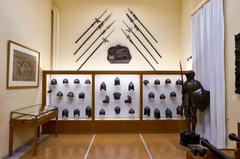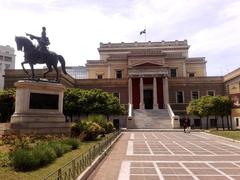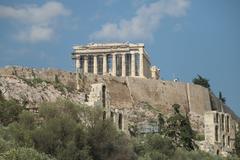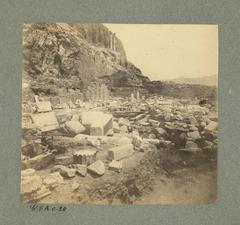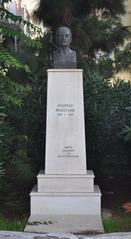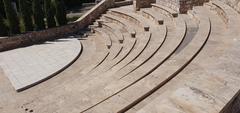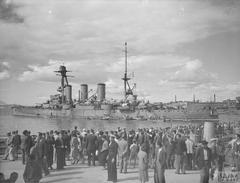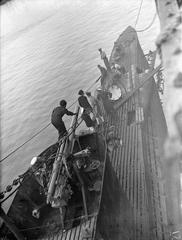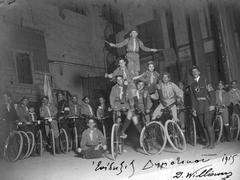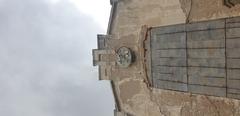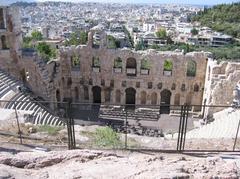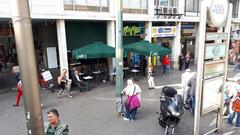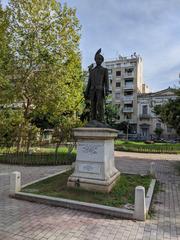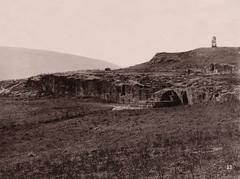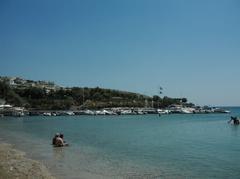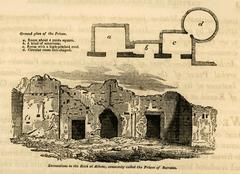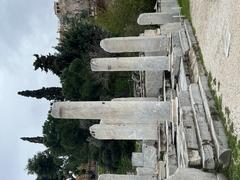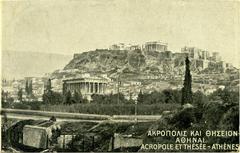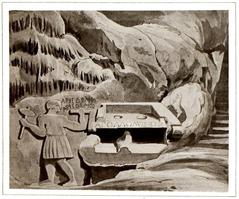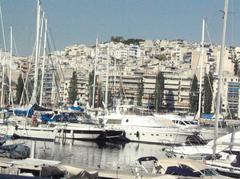
Comprehensive Guide to Visiting the National Historical Museum in Piraeus, Greece
Date: 18/07/2024
Introduction
The Εθνικό Ιστορικό Μουσείο (National Historical Museum) in Piraeus, Greece, stands as a monumental repository of the nation’s rich and diverse history. Established in 1882, this museum serves as a crucial custodian of Greek cultural heritage, offering visitors a deep dive into Greece’s past from the Greek War of Independence to modern times. Housed in a neoclassical building that itself is a significant historical artifact, the museum’s architecture and its extensive collections create a unique and immersive experience for history enthusiasts and casual visitors alike (National Historical Museum in Piraeus). This comprehensive guide aims to provide essential information for prospective visitors, covering aspects such as visiting hours, ticket prices, notable exhibits, and practical tips to make the most of your visit. Whether you’re interested in historical artifacts, educational programs, or simply exploring one of Piraeus’ key cultural sites, the National Historical Museum has something to offer.
Table of Contents
- Introduction
- Visiting the National Historical Museum in Piraeus
- Conclusion
- References
Visiting the National Historical Museum in Piraeus
Origins and Establishment
The Εθνικό Ιστορικό Μουσείο (National Historical Museum) in Piraeus, Greece, is a cornerstone of Greek cultural heritage. Established in 1882, the museum was initially housed in the Old Parliament House in Athens before moving to its current location in Piraeus. The museum’s foundation was driven by the need to preserve and showcase Greece’s rich historical artifacts, particularly those related to the Greek War of Independence and subsequent historical periods.
Architectural Significance
The building that houses the Εθνικό Ιστορικό Μουσείο is itself a historical artifact. Originally constructed in the late 19th century, the structure exemplifies neoclassical architecture, a style that was prevalent in Greece during that era. The design features grand columns, intricate friezes, and expansive halls, all of which contribute to the building’s historical and aesthetic value. The architecture not only serves as a backdrop for the exhibits but also enhances the visitor experience by providing a tangible connection to the past.
Key Historical Periods Represented
Greek War of Independence (1821-1830)
One of the museum’s primary focuses is the Greek War of Independence, a pivotal event in Greek history. The museum’s collection includes a vast array of artifacts from this period, such as weapons, uniforms, and personal items belonging to key figures like Theodoros Kolokotronis and Georgios Karaiskakis. These items provide invaluable insights into the struggles and triumphs of the Greek people during their fight for independence from Ottoman rule.
The Balkan Wars (1912-1913)
The Balkan Wars are another significant period represented in the museum. The collection includes military paraphernalia, photographs, and documents that shed light on Greece’s role in these conflicts. These artifacts help visitors understand the geopolitical dynamics of the early 20th century and Greece’s efforts to expand its territory and influence in the region.
World War II and the Greek Civil War
The Εθνικό Ιστορικό Μουσείο also houses extensive collections related to World War II and the Greek Civil War. These exhibits include military equipment, personal letters, and photographs that document the hardships and heroism of the Greek people during these tumultuous times. The museum’s portrayal of these periods is both comprehensive and poignant, offering a balanced view of the conflicts and their impact on Greek society.
Notable Exhibits
The Charioteer of Delphi
One of the museum’s most famous exhibits is the Charioteer of Delphi, a bronze statue dating back to 470 BC. Although the original statue is housed in the Delphi Archaeological Museum, a detailed replica is on display at the Εθνικό Ιστορικό Μουσείο. This exhibit is particularly significant as it represents the artistic and cultural achievements of ancient Greece.
The Flag of the Filiki Eteria
The Filiki Eteria, or Society of Friends, played a crucial role in the Greek War of Independence. The museum proudly displays the original flag of this secret organization, which symbolizes the unity and determination of the Greek people in their quest for freedom. This artifact is a powerful reminder of the sacrifices made by those who fought for Greece’s independence.
Educational and Cultural Impact
The Εθνικό Ιστορικό Μουσείο is not just a repository of artifacts; it is also a center for education and cultural enrichment. The museum offers a variety of educational programs and workshops aimed at students, researchers, and the general public. These programs are designed to foster a deeper understanding of Greek history and culture, encouraging visitors to engage with the past in meaningful ways.
Preservation and Conservation Efforts
Preserving the artifacts and exhibits is a top priority for the museum. The Εθνικό Ιστορικό Μουσείο employs a team of skilled conservators who work tirelessly to maintain and restore the items in its collection. These efforts ensure that future generations will have the opportunity to experience and learn from these invaluable pieces of history.
Modern Developments and Future Plans
In recent years, the Εθνικό Ιστορικό Μουσείο has undertaken several modernization projects to enhance the visitor experience. These include the introduction of interactive exhibits, digital archives, and virtual tours. The museum is also planning to expand its facilities to accommodate a growing number of visitors and to provide more space for its ever-expanding collection.
Visitor Information and Tips
Visiting Hours and Best Time to Visit
The Εθνικό Ιστορικό Μουσείο is open daily from 9:00 AM to 5:00 PM. To avoid crowds and enjoy a more relaxed visit, it is advisable to arrive early in the morning, especially during the peak tourist season from June to August. Visiting during weekdays can also help you avoid the weekend rush.
Admission Fees and Tickets
The admission fee for adults is generally around €6, while reduced tickets for students, seniors, and children are available for approximately €3. Admission is free on certain days, such as the first Sunday of each month from November to March, and on national holidays like International Museum Day on May 18. Always check the official website for the most current pricing and special offers.
Guided Tours and Audio Guides
For a more enriching experience, consider joining a guided tour. These tours are often available in multiple languages, including English, and provide in-depth insights into the exhibits. Audio guides are also available for rent at the entrance, offering a self-paced exploration of the museum’s collections. Booking a guided tour in advance through the museum’s official website is recommended, especially during peak seasons.
Accessibility
The museum is committed to being accessible to all visitors. It features ramps and elevators to accommodate wheelchair users and those with mobility issues. There are also accessible restrooms available. For visitors with visual impairments, the museum offers tactile exhibits and Braille descriptions. It is advisable to contact the museum in advance to arrange any specific accessibility needs.
Photography and Filming
Photography is generally allowed in most areas of the museum, but the use of flash and tripods is prohibited to protect the artifacts. For those interested in filming or professional photography, special permission must be obtained from the museum administration. Always check for any specific restrictions or guidelines upon arrival.
Nearby Attractions
The museum is conveniently located near several other attractions in Piraeus, making it easy to plan a full day of sightseeing. Nearby points of interest include the Archaeological Museum of Piraeus, the Hellenic Maritime Museum, and the bustling Piraeus Port. Combining a visit to the Εθνικό Ιστορικό Μουσείο with these nearby sites can provide a comprehensive understanding of the region’s rich history and culture.
Dining and Refreshments
While the museum does not have an on-site café, there are numerous dining options within walking distance. The nearby Mikrolimano area is famous for its seafood restaurants, offering a variety of traditional Greek dishes. For a quick snack or coffee, several cafes and bakeries are located along the main streets surrounding the museum.
Souvenirs and Gift Shop
The museum’s gift shop offers a range of souvenirs, including books, replicas of artifacts, and traditional Greek crafts. Purchasing items from the gift shop not only provides a memento of your visit but also supports the museum’s ongoing preservation and educational efforts.
Safety and Security
The museum has implemented several safety measures to ensure a secure environment for all visitors. Security personnel are present throughout the premises, and surveillance cameras monitor key areas. Visitors are required to pass through a security check at the entrance, and large bags or backpacks must be stored in the provided lockers. It is advisable to keep personal belongings secure and be mindful of your surroundings.
Special Exhibitions and Events
The Εθνικό Ιστορικό Μουσείο frequently hosts special exhibitions and cultural events, ranging from temporary art displays to historical reenactments and educational workshops. These events provide unique opportunities to engage with the museum’s collections in new and exciting ways. Information about upcoming events can be found on the museum’s official website or social media channels.
Transportation and Parking
The museum is easily accessible by public transportation. The nearest metro station is Piraeus (Line 1), which is about a 15-minute walk from the museum. Several bus lines also stop nearby, including routes 040, 049, and 130. For those driving, limited street parking is available around the museum, but it can be challenging to find a spot during peak hours. Paid parking lots are also available within walking distance.
Language and Communication
While most of the museum’s staff speak English, it is always helpful to know a few basic Greek phrases. Signage and exhibit descriptions are typically available in both Greek and English. For non-Greek speakers, the audio guides and guided tours in English can greatly enhance the understanding and enjoyment of the exhibits.
COVID-19 Precautions
In light of the ongoing COVID-19 pandemic, the museum has implemented several health and safety measures. These include mandatory mask-wearing, hand sanitizing stations, and social distancing protocols. Visitor numbers may be limited to ensure adequate spacing, so it is advisable to book tickets in advance. Always check the latest COVID-19 guidelines on the museum’s official website before your visit.
Conclusion
The Εθνικό Ιστορικό Μουσείο in Piraeus is not just a museum but a vital institution that preserves and promotes Greek history and culture. From its neoclassical architecture to its extensive collections that cover key historical periods such as the Greek War of Independence, the Balkan Wars, and World War II, the museum offers an immersive and educational experience for visitors of all ages. The museum’s commitment to accessibility, educational programs, and modern developments such as interactive exhibits and digital archives further enhance its appeal. Whether you’re a history enthusiast, a student, or a casual visitor, a trip to the National Historical Museum provides a comprehensive understanding of Greece’s rich and diverse heritage. For the latest updates, special exhibitions, and ticket information, be sure to visit the museum’s official website and consider downloading their mobile app, Audiala, for an enriched visit.
References
- Visiting the National Historical Museum in Piraeus - Hours, Tickets, and Historical Insights, 2024, National Historical Museum (Visiting the National Historical Museum in Piraeus)
- National Historical Museum in Piraeus - Visiting Hours, Tickets, and Historical Insights, 2024, National Historical Museum (National Historical Museum in Piraeus)
- Essential Visitor Tips for Εθνικό Ιστορικό Μουσείο in Piraeus - Hours, Tickets, and More, 2024, National Historical Museum (Essential Visitor Tips for Εθνικό Ιστορικό Μουσείο in Piraeus)

